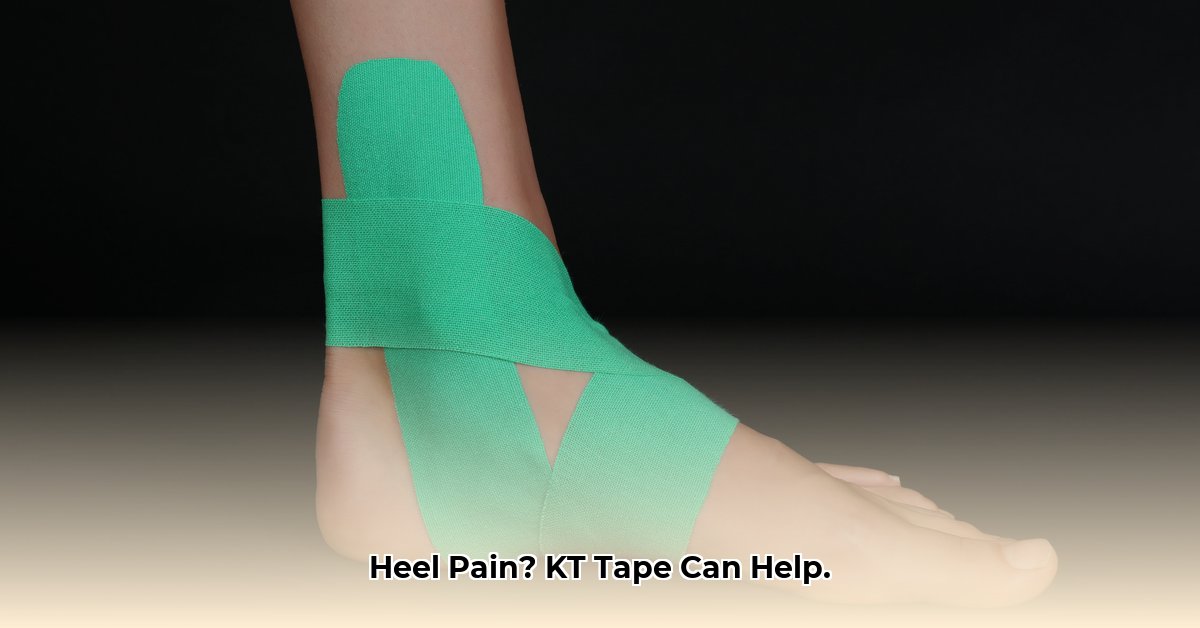Understanding Heel Pain: Why Does My Heel Hurt?
Heel pain can sideline anyone, from athletes to those who simply enjoy a leisurely stroll. Understanding its potential causes is the first step towards finding relief. Several factors can contribute to heel pain:
- Plantar Fasciitis: This common culprit involves inflammation of the plantar fascia, the thick band of tissue supporting the arch of your foot. It often presents as a sharp, stabbing pain, especially upon waking or after periods of rest.
- Heel Spurs: Bony growths on the heel bone, heel spurs can irritate the plantar fascia, exacerbating pain. Research suggests a link between heel spurs and long-term plantar fasciitis.
- Achilles Tendonitis: Inflammation of the Achilles tendon, which connects your calf muscles to your heel bone, can cause pain and stiffness along the back of your heel.
- Peroneal Tendonitis: The peroneal tendons, running along the outer side of your ankle, can become inflamed, sometimes causing referred pain in the heel.
- Overuse: Simply putting too much stress on your feet – from prolonged standing, high-impact activities, or improper footwear – can lead to general heel discomfort.
KT Tape: A Supportive Friend for Your Heel
Kinesiology tape, commonly known as KT Tape, offers a drug-free, non-invasive approach to managing heel pain. It’s thought to work primarily through mechanical support, acting like a gentle hug for your heel and potentially reducing strain on the affected tissues. Some theories suggest KT Tape may also improve blood flow and lymphatic drainage, although further research is needed to confirm these benefits.
Choosing the Right KT Tape
Not all KT Tapes are created equal. Consider these factors when choosing:
- Adhesive Strength: Stronger adhesives are ideal for athletes and high-impact activities, while gentler options suit sensitive skin.
- Material: Synthetic tapes offer durability, while cotton blends provide breathability and comfort.
- Water Resistance: Opt for water-resistant tape if you’re a swimmer or prone to sweating.
Here’s a quick comparison of popular choices:
| Feature | KT Tape Pro | KT Tape Gentle | KT Tape Pro Extreme |
|---|---|---|---|
| Adhesive | Strong | Mild | Strongest |
| Water Resistance | High | Moderate | Highest |
| Material | Synthetic | Cotton Blend | Synthetic |
| Ideal For | Intense activity | Sensitive Skin | Extreme conditions |
Reading user reviews can provide valuable insights into real-world experiences with different KT Tape products.
Step-by-Step KT Tape Application Techniques
Proper application is essential for maximizing KT Tape’s effectiveness. These step-by-step guides, accompanied by visuals (search online for “KT Tape for heel pain application videos”), will help you get it right:
Plantar Fasciitis
- Prepare: Clean and dry your foot thoroughly. Shaving any hair in the area can improve adhesion.
- Measure and Cut: Cut two strips. One long enough to run from heel to ball of foot, the other half as long. Round the edges to prevent peeling.
- Anchor the Heel: Apply the end of the long strip to the bottom of your heel without stretching.
- Tape the Arch: Apply the long strip along your arch with 25-50% stretch, anchoring the end near your toes without stretching.
- Support the Arch: Apply the shorter strip across your arch, perpendicular to the first, with 25-50% stretch. Anchor both ends without stretching.
Achilles Tendonitis
- Prepare: Clean the skin around your Achilles tendon. Cut a strip long enough to run from below your calf to your heel.
- Anchor Below Calf: Apply the top end of the tape just below your calf muscle without stretching.
- Tape Towards Heel: Apply the tape down the back of your leg with 25-50% stretch, anchoring the end at your heel without stretching.
- Optional Support: Add a second, slightly overlapping strip for additional support.
Heel Spurs
Since heel spurs often accompany plantar fasciitis, the taping method for plantar fasciitis is generally recommended.
Precautions and Considerations
- Skin Sensitivity: Some individuals may experience skin irritation or allergic reactions. Perform a patch test before applying to a larger area. Remove the tape immediately if any discomfort arises.
- Open Wounds: Avoid applying KT Tape over open wounds or broken skin.
- Not a Cure-All: KT Tape offers support, not a cure. It may provide relief, but it won’t address the root cause of your pain.
- Seek Professional Advice: For persistent or severe heel pain, consult a doctor or physical therapist for accurate diagnosis and a personalized treatment plan.
Beyond KT Tape: A Holistic Approach
KT Tape is most effective as part of a comprehensive treatment strategy. Consider these complementary therapies:
- Stretching: Regularly stretch your plantar fascia and calf muscles.
- Icing: Apply ice packs to reduce inflammation after activity.
- Orthotics: Use shoe inserts to provide additional support and cushioning.
- Rest: Allow adequate rest to promote healing.
- Physical Therapy: A physical therapist can design a personalized exercise program to address your specific needs.
Frequently Asked Questions
- How long can I wear KT Tape? Typically 3-5 days, but this may vary.
- Can I shower with KT Tape? Yes, KT Tape is water-resistant.
- Will KT Tape work for any heel pain? It may help some individuals, but it’s not a universal solution. Always seek professional medical advice for proper diagnosis and treatment.
Disclaimer: This information is for educational purposes only and does not constitute medical advice. Always consult with a qualified healthcare professional for diagnosis and treatment of any health condition.
- Weight Loss Supplements That Work and Those That Dont - October 31, 2025
- Male Eating Disorders Often Missed but Increasingly Prevalent - October 29, 2025
- Males With Anorexia Nervosa Have Distinct Symptoms and Treatment Needs - October 28, 2025










